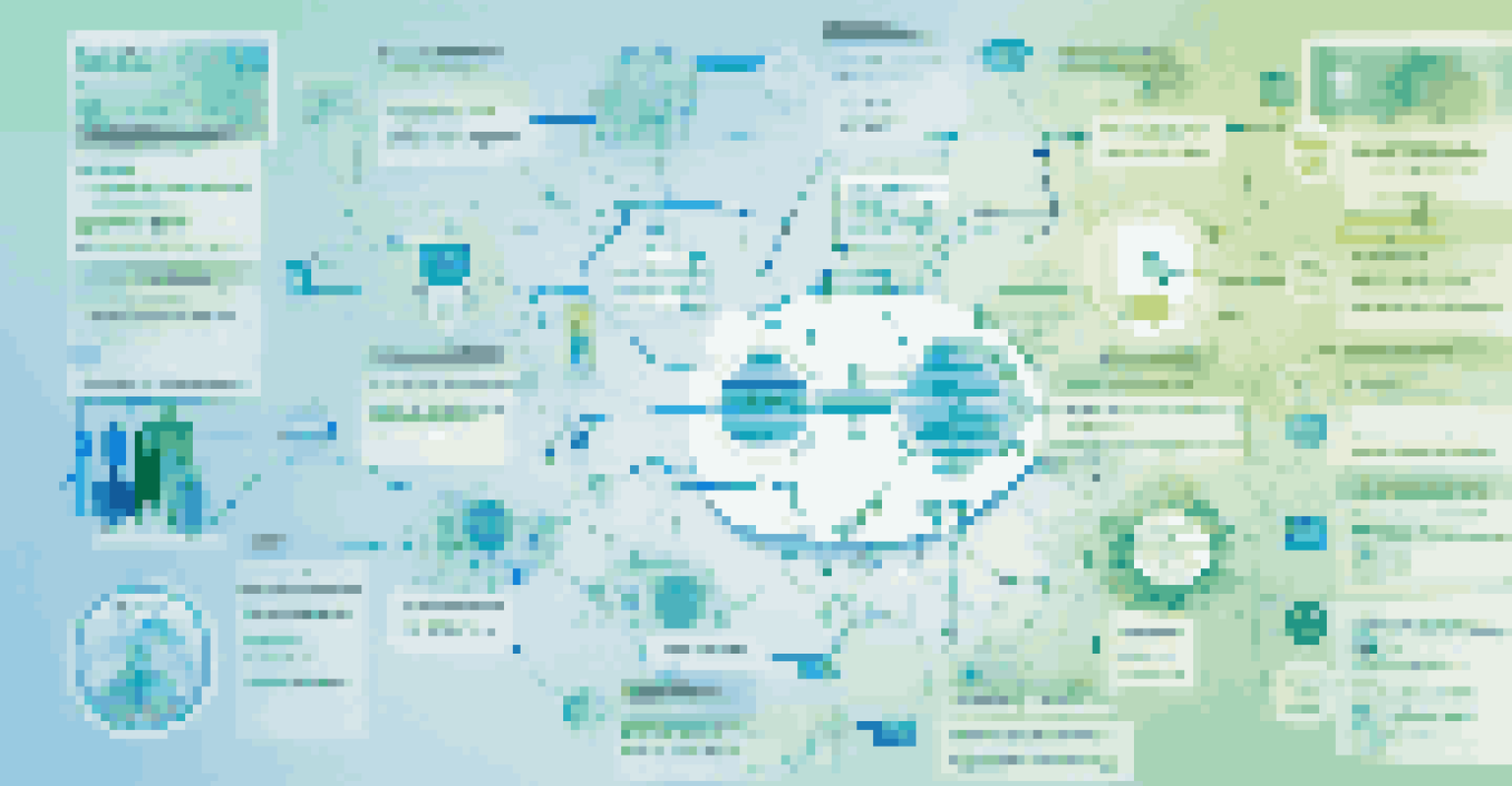How Digital Health Records Improve Care Coordination Among Providers

Understanding Digital Health Records in Healthcare
Digital health records (DHRs) are electronic versions of a patient's paper chart, allowing for real-time access to patient information. They provide a comprehensive view of a patient’s history, including diagnoses, treatments, medications, and allergies. By centralizing this data, DHRs eliminate the need for physical paperwork, reducing errors and streamlining processes.
The future of healthcare lies in the integration of technology and patient data to provide personalized, efficient care.
For healthcare providers, having instant access to a patient's medical history can be a game changer. Imagine a scenario where a patient visits a new doctor; rather than starting from scratch, the new provider can quickly review the previous treatments and ongoing care plans. This immediate availability of information helps to build a cohesive understanding of the patient’s health journey.
Moreover, DHRs pave the way for better communication among different providers. When specialists, primary care doctors, and hospitals can all access the same updated information, they can coordinate care more effectively, leading to better outcomes for patients.
Streamlining Communication Among Providers
One of the most significant advantages of DHRs is their ability to facilitate communication among various healthcare providers. In traditional settings, information sharing often relies on phone calls or faxes, which can lead to delays and miscommunication. DHRs, on the other hand, enable providers to send messages and share documents instantly.

For example, if a primary care physician refers a patient to a specialist, they can include pertinent notes and test results directly within the DHR. This ensures the specialist has all the necessary information ahead of the appointment, allowing for a more focused and productive consultation. It’s like passing a baton in a relay race; seamless handoffs lead to smoother transitions.
DHRs Enhance Patient Care Coordination
Digital health records improve communication among healthcare providers, ensuring seamless transitions and better patient outcomes.
Additionally, DHRs reduce the risk of duplicated tests and procedures. When all providers can see what tests have already been conducted and their results, they can avoid unnecessary repetition, saving time and resources for both the healthcare system and the patient.
Enhancing Patient Safety with Accurate Information
Patient safety is paramount in healthcare, and DHRs play a crucial role in improving it. With accurate and up-to-date information readily available, providers can make better-informed decisions. For instance, knowing a patient's allergies or medication interactions can prevent harmful prescribing errors.
Electronic health records are a tool for improving communication, safety, and efficiency in healthcare delivery.
Consider a patient who is allergic to penicillin. If this information is logged in their digital health record, any provider accessing that record will be alerted to avoid prescribing that medication. This level of awareness can be lifesaving and underscores the importance of having comprehensive health records.
Moreover, DHRs can flag potential issues like duplicate medications or conflicting treatments, allowing healthcare teams to intervene before complications arise. It’s a proactive approach that emphasizes prevention over reaction, ultimately leading to safer patient care.
Facilitating Collaborative Care Models
Collaborative care models, where multiple providers work together to manage a patient’s health, thrive on the foundation of DHRs. These records allow for shared access to patient information, making it easier for teams to assess progress and adjust treatment plans accordingly. It’s akin to a well-coordinated orchestra where each musician plays in harmony.
For instance, in managing chronic conditions like diabetes, a team may include a primary care doctor, a nutritionist, and an endocrinologist. With a DHR, all team members can track the patient's glucose levels, dietary changes, and medication adherence in real time. This holistic view enables them to provide tailored advice and interventions that align with the patient’s needs.
Patient Safety Through Accurate Data
With up-to-date information in digital health records, providers can make informed decisions that enhance patient safety and prevent errors.
Furthermore, patients can also access their DHRs, which fosters a sense of ownership over their health. When patients are engaged in their care, they are more likely to adhere to treatment plans, leading to improved health outcomes.
Reducing Administrative Burdens
Administrative tasks can consume a significant amount of time in healthcare settings, often detracting from patient care. DHRs streamline many of these processes, allowing providers to focus more on their patients rather than paperwork. For example, scheduling appointments, billing, and documenting visits can all be managed more efficiently through digital systems.
Imagine a busy clinic where staff no longer have to shuffle through piles of paperwork to find a patient’s information. With DHRs, everything is at their fingertips, making routine tasks faster and more accurate. This efficiency not only saves time but also reduces the risk of administrative errors.
Additionally, by automating routine tasks, DHRs free up healthcare staff to spend more time on patient interactions. This can enhance the patient experience, as providers can dedicate more attention to understanding and addressing patient concerns.
Improving Continuity of Care
Continuity of care is essential for effective healthcare delivery, and DHRs play a key role in ensuring patients receive consistent treatment across different settings. When patients transition between care levels—such as from hospital to home health care—DHRs provide a complete record of their treatment history, medications, and follow-up plans.
For instance, if a patient is discharged from the hospital, their DHR can be accessed by their primary care physician and home health care provider to ensure everyone is on the same page. This level of transparency helps to bridge gaps in care and ensures that patients continue to receive the right follow-up and support.
Future Innovations in DHR Technology
Emerging technologies like AI and telehealth are set to further enhance the capabilities of digital health records, making healthcare more efficient.
Moreover, continuity of care fosters trust between patients and providers. When patients see that their healthcare team is well-informed about their history and needs, they are more likely to engage fully in their treatment plans, leading to better health outcomes.
The Future of DHRs in Healthcare
As technology continues to evolve, the future of digital health records looks promising. Innovations such as artificial intelligence and machine learning are being integrated into DHR systems to further enhance their capabilities. These advancements could help providers analyze health trends, predict patient needs, and personalize care even more effectively.
Moreover, the implementation of telehealth services has shown the importance of DHRs in delivering care remotely. With virtual consultations becoming more common, having a robust digital health record ensures that providers can still access essential patient information regardless of the location.

Looking ahead, we can expect DHRs to become even more user-friendly and integrated with other health technologies. This evolution will continue to transform how care is coordinated, making healthcare more accessible and efficient for everyone involved.